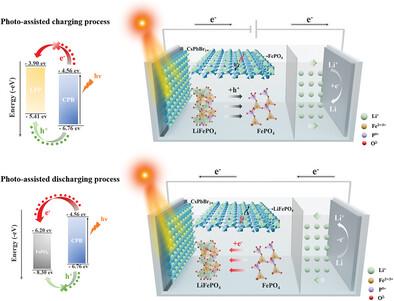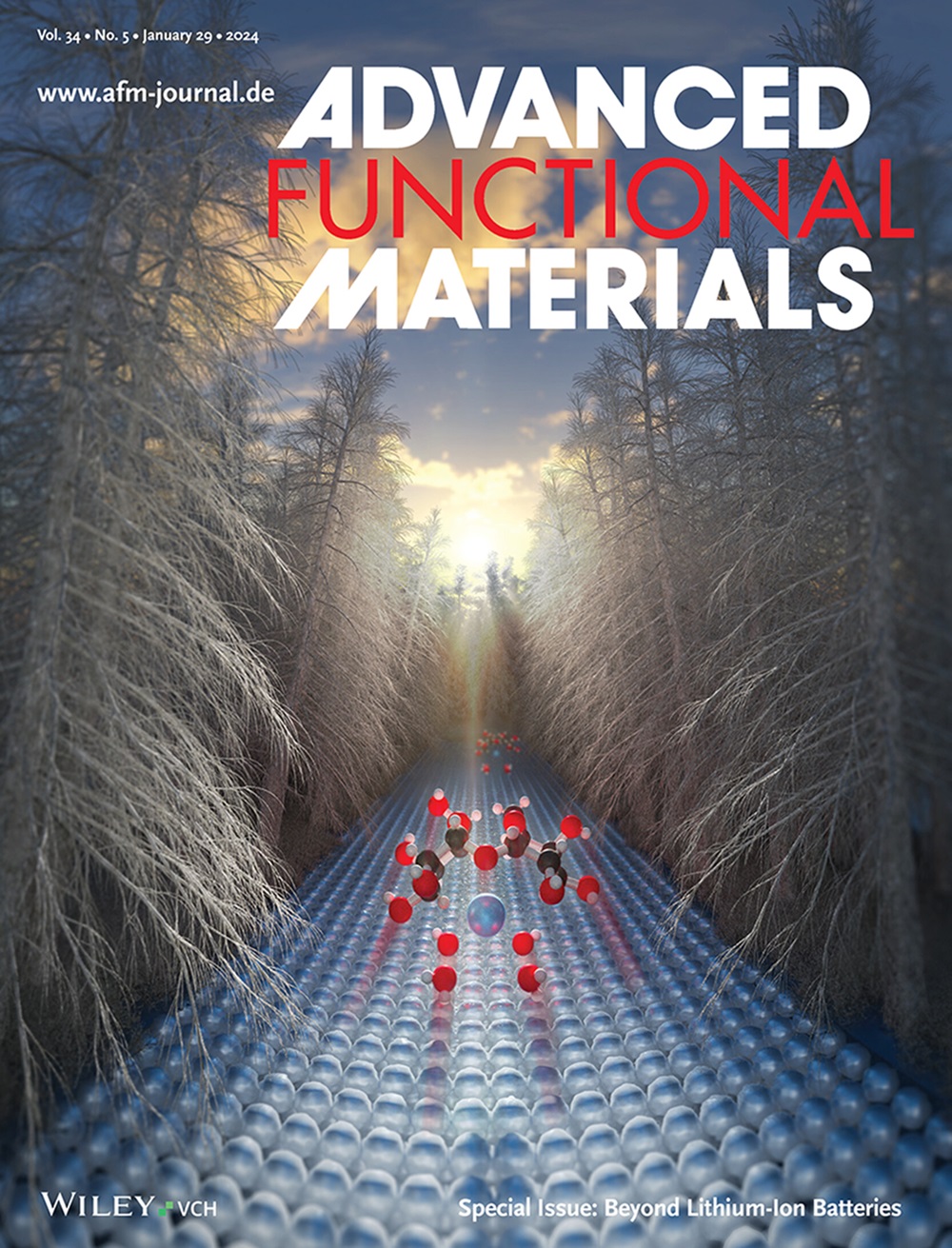Enhancing Lithium-Ion Battery Performance with Photoactive LiFePO4/CsPbBr3 Quantum Dots Composite Cathodes
IF 18.5
1区 材料科学
Q1 CHEMISTRY, MULTIDISCIPLINARY
引用次数: 0
Abstract
The advancement of photo-assisted lithium-ion batteries (LIBs) relies on developing suitable photoactive Li+ storage materials and understanding their energy storage/conversion mechanisms. A novel composite material, LiFePO4/CsPbBr3 quantum dots (LFP/CPB QDs) is presented, created by embedding CPB QDs onto LFP nanoparticles. This composite exhibits dual functionalities of photoelectric conversion and storage in LIBs. Under simulated light, the composite demonstrated significant enhancements in charge and discharge capacities, with increases of 16.8% and 16.4% at 3C, respectively. Remarkably, the coulombic efficiency exceeded 100%, reaching 115.2% when charged in the dark and discharge under light. The LFP/CPB QDs cathode also maintained 93.9% capacity retention after 200 cycles at 0.5C. Analyses with synchronous-illumination X-ray photoelectron spectroscopy, cyclic voltammetry, and electrochemical impedance spectroscopy confirmed photo-induced charge transfer at the composite interface. Under sunlight, CPB QDs transfer photogenerated electrons to LFP, promoting the transition of Fe3+ to Fe2+ and enhancing Li+ reaction kinetics. These findings offer valuable insights for designing electrode materials for photo-assisted battery applications.

利用光活性 LiFePO4/CsPbBr3 量子点复合阴极提高锂离子电池性能
光辅助锂离子电池(LIB)的发展有赖于开发合适的光活性 Li+ 储存材料并了解其能量储存/转换机制。本文介绍了一种新型复合材料--LiFePO4/CsPbBr3 量子点(LFP/CPB QDs),它是通过将 CPB QDs 嵌入 LFP 纳米粒子而制成的。这种复合材料在 LIB 中具有光电转换和存储的双重功能。在模拟光照下,该复合材料的充电和放电容量显著提高,在 3C 时分别提高了 16.8% 和 16.4%。值得注意的是,其库仑效率超过了 100%,在黑暗中充电和在光照下放电时达到了 115.2%。LFP/CPB QDs 阴极在 0.5C 下循环 200 次后,容量保持率也达到 93.9%。利用同步照明 X 射线光电子能谱、循环伏安法和电化学阻抗能谱进行的分析证实了复合界面上由光诱导的电荷转移。在阳光下,CPB QDs 将光生电子转移到 LFP,促进了 Fe3+ 向 Fe2+ 的转变,并增强了 Li+ 反应动力学。这些发现为设计光辅助电池应用的电极材料提供了宝贵的启示。
本文章由计算机程序翻译,如有差异,请以英文原文为准。
求助全文
约1分钟内获得全文
求助全文
来源期刊

Advanced Functional Materials
工程技术-材料科学:综合
CiteScore
29.50
自引率
4.20%
发文量
2086
审稿时长
2.1 months
期刊介绍:
Firmly established as a top-tier materials science journal, Advanced Functional Materials reports breakthrough research in all aspects of materials science, including nanotechnology, chemistry, physics, and biology every week.
Advanced Functional Materials is known for its rapid and fair peer review, quality content, and high impact, making it the first choice of the international materials science community.
 求助内容:
求助内容: 应助结果提醒方式:
应助结果提醒方式:


